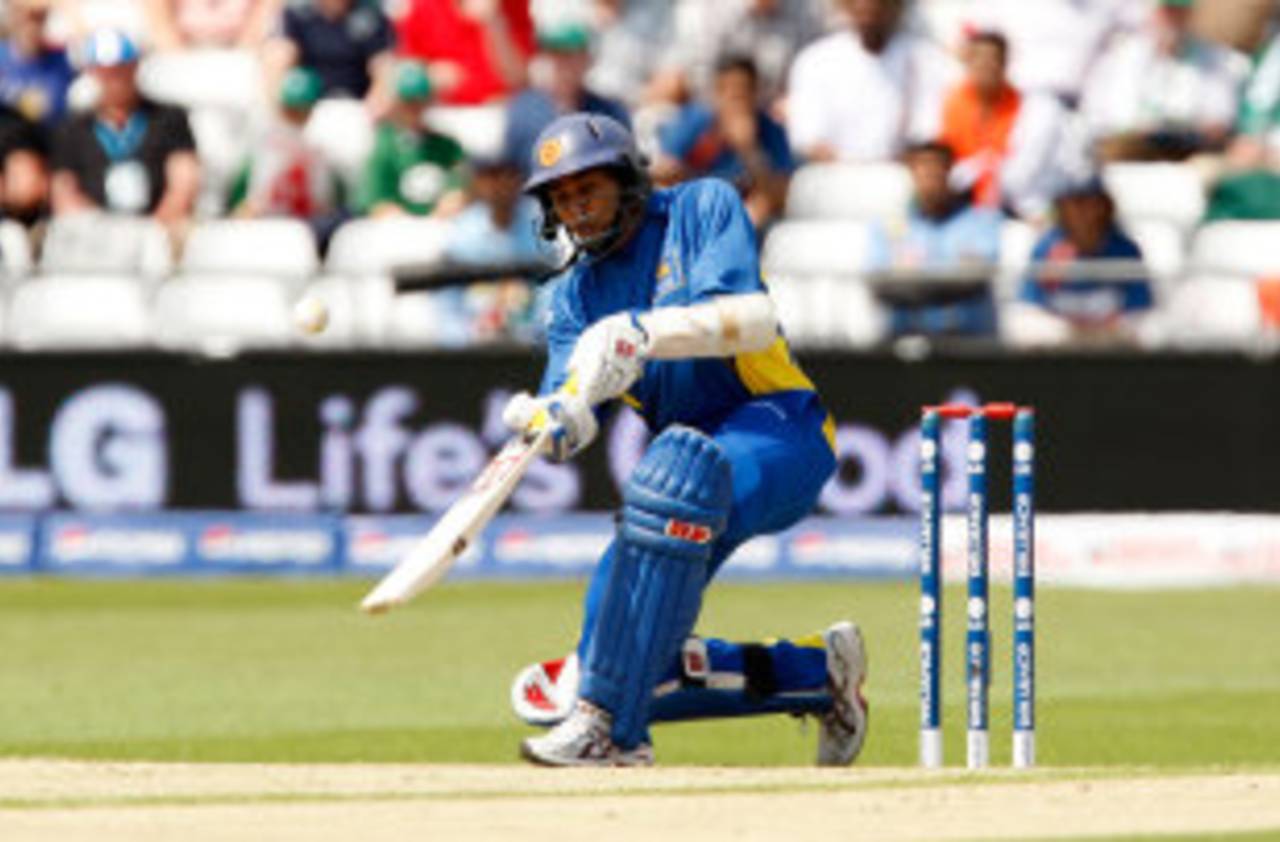Sri Lanka take unorthodox route to success
Sri Lanka's unique approach to learning and playing cricket has certainly given them an edge over their opponents in this tournament
George Binoy at Trent Bridge
16-Jun-2009

Tillkaratne Dilshan's scoop is among the several innovations Sri Lanka have come up with in the World Twenty20 • Associated Press
Cricket lovers everywhere haven't had enough of Tillakaratne Dilshan's audacious scoop over the wicketkeeper yet and they are already being treated to a second unconventional shot from another Sri Lankan batsman. Taking a cue from Andrew Symonds, Mahela Jayawardene played a reverse-sweep with the back of his bat against Jacob Oram during the Super Eights match versus New Zealand at Trent Bridge. He bent down low, got into position to play the shot, and just when we expected him to switch his bat around, he simply let the ball go off the back, placing it fine enough to beat the man at short third man.
"It's something I have been trying for a while," Jayawardene said. "I have actually been trying to hit the reverse-sweep with the other side of the bat but found it a bit difficult to time it, sometimes it's a bit quick for me and I get top edges. This is something I've worked with Trevor [Bayliss] on. He was saying that [John] Dyson used to do that in Australia. He used to tap it with the other side because he couldn't sweep.
"A lot of teams bring third man up these days and I thought I'll give it a go. It was the last over so I had nothing to lose and everything to gain. Hopefully it will keep working."
Jayawardene's back-bat paddle is the latest of several innovations the Sri Lankans have unleashed on their opponents during the World Twenty20. Dilshan dropped jaws when he got to his fifty in Sri Lanka's first match against Australia by moving across his stumps, bending low to get under the ball, and scooping it right over the wicketkeeper's head. It wasn't a one-off for he replicated that shot with success against every team apart from New Zealand who, according to Daniel Vettori, had made plans to prevent Dilshan from playing that shot. When Dilshan was asked how he conceived of such a shot which, if mis-timed, could send the ball straight on to his face, his answer was simple. "You can't place a fielder behind the wicketkeeper," he said.
It's not just the Sri Lankan batsmen, though, who've showed off new tricks in England. Lasith Malinga has developed a delivery that is the polar opposite of his stock ball, the searing, toe-crushing yorker. Just when batsmen are preparing to get their boots out of the way, and their bats down in time to protect their stumps, Malinga unleashes a slower full toss which swerves away from the right-hander and often flattens the stumps. Brad Haddin was his first unsuspecting victim and Malinga used the slower full toss repeatedly against New Zealand today as well. He bowled four in an over, forcing Aaron Redmond to chip one of them straight to square leg.
These innovations, Jayawardene said, were not developed on a whim but were part of Sri Lanka's plan to stay ahead of their competition in a game that is constantly evolving. "What we've realised as a team is that if we are going to move up a level we have to come up with different things," Jayawardene said. "A lot of people analyse you. What our guys are trying to do is keep one step ahead. Sometimes it works, sometimes it doesn't. But as long as the attitude and the confidence is there to do that I think it will help you in the long run."
The Sri Lankan team, unlike most others, does not have many homogenous cricketers. They've produced a succession of players with unorthodox styles who have amazed audiences with their unique brand of cricket. Jayawardene indicated that the system which produced Sanath Jayasuriya, Muttiah Muralitharan, Malinga and Mendis was likely to churn out more never-seen-before type of players.
"Kids pick up a ball and start playing and they try to do different things," Jayawardene said. "Over the last ten years we've seen the way Sanath bats, so kids have seen people doing different things and are trying to imitate those things and find their own flair.
"The coaches don't try to change many things. They just let the player progress through the system and then fine tune him later. When Ajantha came to the academy, he didn't have control over many things but Ruwan Kalpage helped him work on his deliveries. Within six months he was fine."
Sri Lanka's unique approach to learning and playing cricket has certainly given them an edge over their opponents in this tournament. Vettori, for instance, said that New Zealand had come prepared for Dilshan's scoop but "certainly didn't expect Mahela to use the back of the bat". He tipped Sri Lanka and South Africa as favourites to make the final, and said it would be an amazing match between two teams who "play the game at different ends of the spectrum": South Africa's discipline and skill pitted against Sri Lanka's unorthodox magic.
George Binoy is a senior sub-editor at Cricinfo